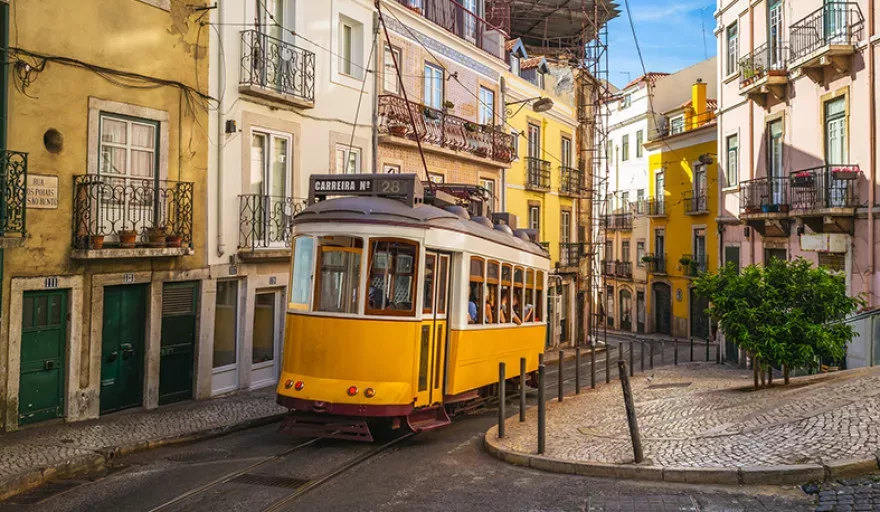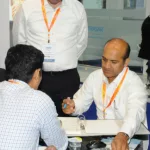INTRODUCTION
Sat in the estuary of the Tagus River, Lisbon is the westernmost capital city in continental Europe and serves as Portugal’s chief port, largest and capital city, and commercial, political and tourist centre.
It was once considered by Europeans to be the furthest edge of the known world before it became basecamp for the renowned Portuguese explorers of the 15th and 16th centuries, Vasco da Gama being the most well-known.
The city is defined geographically by seven hillsides which overlook the river, these vantage points being a highlight for anybody’s visit. Much of the architecture is defined by a huge earthquake that destroyed much of Lisbon in 1755, the rebuilding exercise that followed providing the template of what stands today.
As well as being scenically spectacular, Lisbon is a crucial economic centre and lies on a strategic sea route. Its port is bustling with activity, handling a large proportion of the trade between Portugal and neighbouring Spain.
The city is also culturally one of the country’s most important hubs. Despite making up just three percent of Portugal’s landmass, the metropolitan area is home to more than a quarter of the nation’s population, owed much to the surge in migration from rural areas in the 1970s when industrial activity took off.
THE BUSINESS END
Until around 50 years ago, Lisbon’s economy has been historically based on fishing industries.
Following a brief stint of nationalisation, industries such as the pharmaceuticals and technology have been taken over by multinationals, although the city’s major economic activities today revolve around services.
This includes tourism, which nationwide celebrated a record year in 2018 in terms of arrivals. Some 21 million tourists visited the country last year, a 1.7 percent growth on 2017 and inclusive of 1.83 million Brits, 1.75 million Spaniards and 2.6 million French and German citizens.
Lisbon saw 15 million sleepover stays, making it the second most popular destination in Portugal second only to the Algarve, a big contributor to the nation’s thriving hotel trade, which took in €3.6 billion in revenue in 2018.
The capital is also emerging as one of Europe’s leading MICE tourism hotspots, its popularity in part due to a cluster of large conferencing venues within easy reach of Lisbon’s ideally situated airport.
Indeed, the International Congress and Convention Association puts the city in sixth place globally in terms of the number of meetings organised last year, climbing three positions on 2017 and ahead of the likes of London, Singapore and Hong Kong.
Q&A WITH PAULA OLIVERIA, EXECUTIVE DIRECTOR, VISIT LISBOA
Visit Lisboa is responsible for promoting the Portuguese capital’s already very vibrant tourism market.
Founded in 1997 under the Lisboa Convention Bureau, the organisation has been operating with the vision and mission to showcase the city as a top destination for leisure and business tourism worldwide.
The Lisbon Tourism Association is directed by governing bodies, elected every three years, whose composition includes official bodies, business associations and individual associates – a total of 23 elements representing the various categories of members who operate in different parts of the tourism sector. The presidency of the board is held by the Municipality of Lisbon, and the deputy presidency is exercised by a private entity.
Paula Oliveira is Visit Lisboa’s Executive Director, and has been with the body ever since it founded more than 20 years ago. Before this, she headed up the tourism department at Lisbon’s City Hall, this having graduated from the University of Lisbon in 1987.
Here she answers our questions about the work of Visit Lisboa and gives her opinion on some of the best things to do in the city.
How has Visit Lisboa developed and progressed in terms of its key objectives and the messages it tries to get across?
Paula Oliveira (PO): Within the various marketing plans implemented for the region’s promotion, we have always kept in mind several things, including developing different products and experiences within the region and targeting different segments.
Bringing the key decision makers to the destination was and still is an investment and one of the top tools we use in promotion of the different products, and within what we consider priority and strategic priorities for the Lisboa Region.
How would you say Lisbon has developed in recent years as a business travel hub and what are the key reasons behind its growing appeal?
PO: Lisbon has been able to keep its authenticity, investing in new venues and renovating landmarks which provide a reflection of Portuguese history and culture. For example, Ajuda Palace (Royal Treasure Museum), is set to be open by late 2020.
Why, in your opinion, should someone visit Lisbon?
PO: Lisboa is spread across seven hills overlooking the majestic River Tagus. One will discover a major cultural centre blessed with a mild, sunny climate, a fascinating melting pot where historic influences such as its rich maritime past are interlaced with modern trends and lifestyles.
Thanks to its close proximity to Cascais, the World Heritage Site of Sintra and the Arrábida’s amazing nature, Lisbon is a resort city with an extraordinary variety of experiences within one hour’s distance.
From championship golf courses to the excellent shopping and world class gastronomy and wines, there’s a staggering choice of experiences on offer in the city and the surrounding ocean, beaches and mountain range.
Are there any specific attractions, landmarks or places to eat and drink that you would recommend?
PO: There are many! Exploring the Lisboa hills on a traditional tram ride; having dinner at a Fado restaurant; visiting the cloisters at Jerónimos Monastery (World Heritage site); doing a river cruise on the Tagus River and seeing the city landscape and from the southern bay; visiting the Gulbenkian Foundation; having grilled sardines for lunch at the riverfront; going up 25th April Bridge for an amazing view over Lisboa; having a cocktail at sunset on a rooftop bar… there are plenty of choices.
How do you see Lisbon developing as a business travel hub over the next year to two years?
PO: Lisboa proudly ranks sixth worldwide according to ICCA (International Congress and Conference Association).
We will do our best to keep Lisboa as one of the most attractive capitals for association and corporate events. The quality of service and good value for money are still major factors when selecting our city, and we will continue to promote diversity.
IN FOCUS: LISBON CONGRESS CENTRE (CCL)
Lisbon Congress Centre, commonly known as CCL, is the largest convention and meetings venue in the Portuguese capital, opening its doors in 1989.
Spanning some 29,000 square metres, it houses eight auditoria, five pavilions and 34 meeting rooms, ideal for a business get together of almost any size.
“It has been designed to host national and international conventions, congresses, seminars, exhibitions and meetings of different sizes,” states Visit Lisboa. “It offers flexibility, maximum comfort and efficiency which allows the holding of several and different events simultaneously.”
CCL is situated in Belem, a historical area of Lisbon sat by the Tagus River. Those driving to the venue can park in one of the 1,100 spaces on site, while the riverside restaurant can seat up to 400 diners.
Since opening it has been refurbished twice and has hosted congresses of all sizes, from 100 to almost 10,000 delegates, including the Presidency of the European Union.
CCL offers a wide variety of services to complement any event, including audio-visual, catering, IT, security, furniture and plant supply, freight forwarding, cleaning, first-aid, photography and signage.
For more information, visit here.
TRANSPORT LINKS
Aeroporto de Lisboa, described as an ultramodern transit hub and located just six kilometres north of the city centre, operates direct flights to major destinations in Europe and America.
A range of budget airlines, including Norwegian, easyJet, Ryanair, Transavia and Wizz Air, also fly in and out of Lisbon, making it an affordable destination to get to for many leisure and business travellers.
The airport is covered by bus and metro routes, with taxis and ride sharing services also available into the centre of the city.
Once there, getting around is relatively easy thanks to an extensive bus network that runs almost 24 hours a day on some of the busier routes, while the metro network is another straightforward way of hopping around and reaching places like the nearby Parque das Nações.
There are also several historic tram routes and funiculars, these being particularly popular with tourists looking for a novel way of getting to and exploring Alfama.
Taxis are bountiful and reasonably priced, and cycling can be rewarding if you avoid the worst of the traffic, trams, hills and cobbled streets. Gira is the city’s bike sharing initiative, which has 48 stations scattered around and another 140 in the pipeline.





















